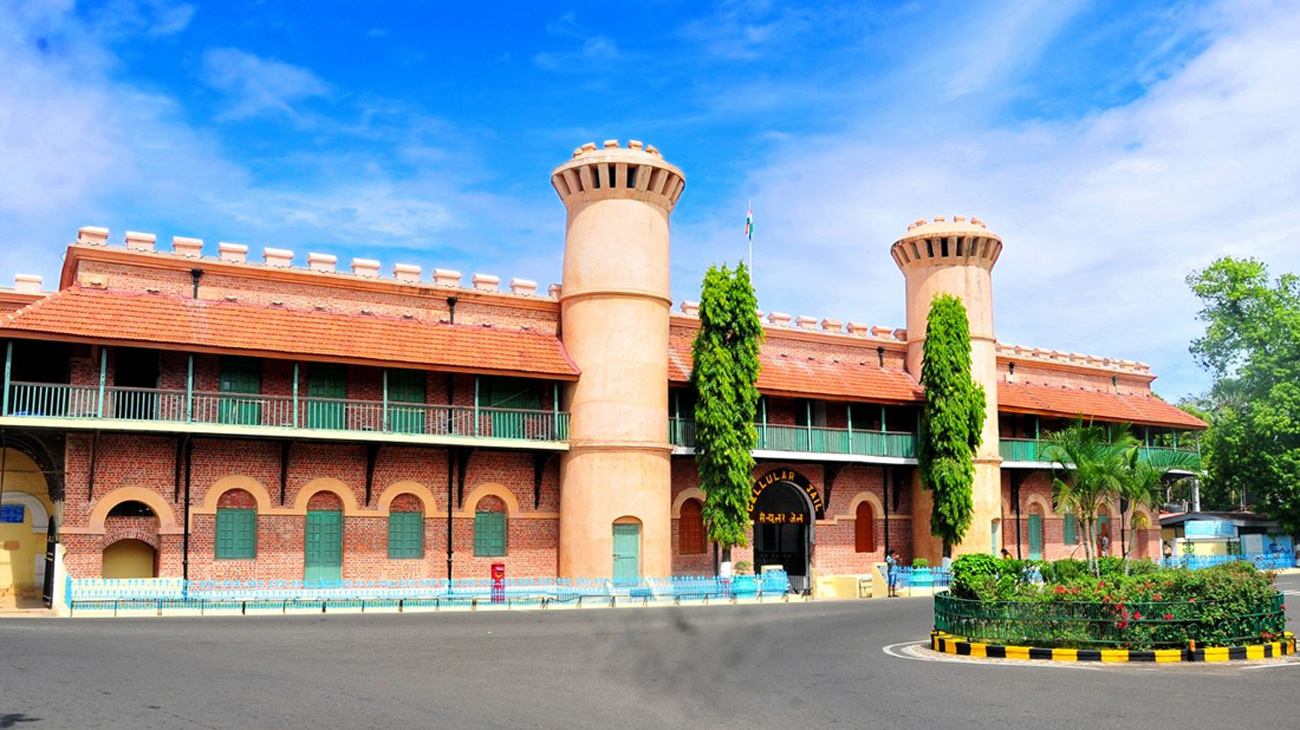Welcome to the Andaman Islands- where history speaks through its colonial buildings and culture dances to the sea.
Tucked away in the corners of Bay of Bengal, Andaman provides for a perfect getaway. With its curly cool water, unpolluted secluded beaches with lush rainforests, the Andaman Islands are one of the best places for such delightful holidays. Yet, tourists from near and far only talk about how this tropical paradise has postcard-perfect landscapes. Beneath the blessed exterior of beauty lies an intricate and rich tapestry of cultural and heritage and historical significance, all waiting to be explored.
Colonial jails, indigenous tribal cultures, war memorials, and ancient temples form a fascinating walk down memory in this place. It is a place for beach and history lovers alike.
1. Cellular Jail: The Icon of India’s Freedom Struggle
The Cellular Jail or Kalapani is one of the most famous monuments in the Andaman Islands. The British constructed it in 1906 and later used it as a place of exile for freedom fighters during colonial rule.
You can almost sense the echo of courage and resistance through those narrow hallways and dark, dank cells. Every evening, the whole show honors the deeds of revolutionaries like Veer Savarkar with some touching narration through the Light and Sound Show.
Must Visit:
– Light and Sound Show (in Hindi and English)
– Freedom Fighter Gallery and Museum
– The view from the top of the central tower
2. Ross Island: Ghosts of the British Raj
A memoir of the British Raj, this hauntingly beautiful island is just one boat trip away from the capital. Then called “Paris of the East” with its luxurious clubs, bakeries, and bungalows, once housed the administrative headquarters of the British in Andaman and Nicobar Islands.
Today nature has taken possession: vines cover the colonial ruins; deer wander in chorus with the winds, and silence now prevails over the barracks where once crowds thrummed with life. It’s like stepping into a land of oblivion.
Now named after Netaji Subhas Chandra Bose after his visit in 1943, Ross Island symbolizes the celebration of the short-lived yet historic claim on the islands during his leadership of the Azad Hind government.
There stands a memorial plaque marking the very place of his arrival and speech. This island’s beauty is near impossible to beat when it comes to history and patriotism combined in one scenic stop.
Must Visit:
– Several makeshift bunkers from the Japanese occupation
– Ruins of British Church
– The light and sound show narrating Bose’s visit
3. Viper Island: Where the Gallows Still Stand
Before Cellular Jail, Viper Island was the chief prison for convicts and political prisoners. The island still bears partial ruins of the gallows and other structures belonging to the pre-Cellular Jail period.
Loud and silent, yet presenting an eerie yet significant view into the darker chapters of India’s colonial history. Viper Jail echoes the bone-chilling history of struggle and resistance like no other.
Must Visit For:
– History buffs
– Half-day boat excursions from Port Blair
– Catching sunsets with a historical background
4. Anthropological Museum: Dive into Indigenous Cultures
Curious to know more about the original inhabitants of the Andaman? The Anthropological Museum in Port Blair provides access to the life, traditions, and tools of these indigenous tribes- Jarawas, Onges, Great Andamanese, and Sentinelese.
Even though small, the museum houses an interesting collection of exhibits including life-size models, tribal artifacts, and photographs. A visit here is not only educational but also vital for understanding the local culture better.
5. Kalapani Museum: A Private Tribute to Andaman’s Rich Legacy
Kalapani Museum, your hidden treasure for history lovers, lies at Garacharma, Port Blair. It is one of the first privately started museums in the Andamans by just sheer love and interest to preserve the cultural and political past of the islands.
The museum eloquently narrates the story of the Andamans-from the early settlers and tribal communities to the grisly tales of the penal colony and the Indian freedom struggle. The Kalapani Museum brings history alive, both in informative and emotionally laden ways, through rare photographs, miniature models, maps, and documentaries.
Why visit:
- Discover lesser-known aspects of the islands’ history.
- Explore miniature replicas of the Central Jail and other significant sites.
- Experience history peacefully.
6. Chatham Saw Mill: Asia’s Oldest and Still Running
The Chatham Saw Mill was built in 1883 and is considered the oldest sawmill in Asia and one of the largest. And most definitely, being functional, it is a site to marvel at the working of ancient machines and timber processes from colonial times till now.
There is a museum showcasing beautiful wood items, tools, and a rich history of the mill and the island.
7. Japanese Bunkers: War Relics on the Beaches
Scattered around beaches of Port Blair and Havelock (Swaraj Dweep), the Japanese Bunkers date back to World War II when the Japanese occupied the Andaman Islands.
They provided platforms of defiance and storage, and in doing so gave valuable knowledge of the war’s legacy across the Indian Ocean. Some lie camouflaged deep amongst trees, while others sit right next to tourist beaches, waiting whoever in passing might stumble upon them.
Where to find them:
– Corbyn’s Cove Beach, Port Blair
– Ross Island
– Wandoor
9. Forest Museum and Fisheries Museum
While they aren’t grand monuments, these niche museums in Port Blair serve as hidden treasures for the culturally curious. The Forest Museum informs one about the region’s natural endowments and woodcrafting traditions, while the Fisheries Museum converses on aquatic life and fishing culture of the islands.
Both are brief yet worthwhile interludes for a cultural day tour of the city.
What Makes Andaman A Culturally Rich Spot?
While sunbathing on Radhanagar Beach or going for a snorkel in Neil Island is dreamy, the cultural and historical sites throughout Andaman leave another side to your vacation.
You get to:
- Connect with stories of India’s freedom fighters;
- Explore forgotten colonial towns slowly being consumed by nature.
- Read about tribal heritage and regional identity.



